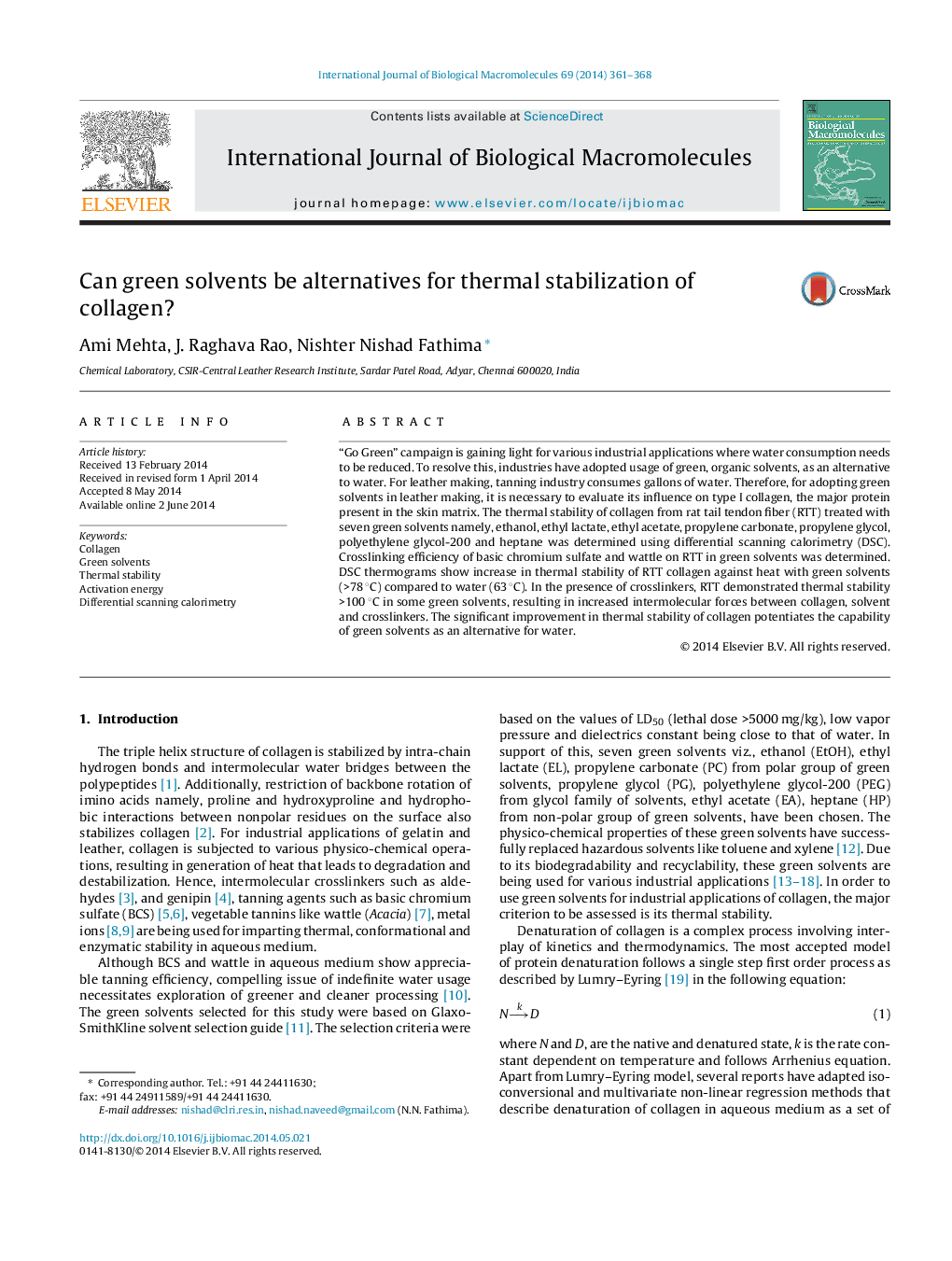| Article ID | Journal | Published Year | Pages | File Type |
|---|---|---|---|---|
| 1986710 | International Journal of Biological Macromolecules | 2014 | 8 Pages |
•Green solvents can be potential alternatives to water for industrial applications.•The thermal and dimensional stability of collagen in green solvents is investigated.•There is significant improvement in thermal stability of collagen in green solvents.•Collagen crosslinked with BCS and wattle in some green solvents elevates thermal stability.•This indicates probable intermolecular interactions between crosslinkers, solvent and collagen.
“Go Green” campaign is gaining light for various industrial applications where water consumption needs to be reduced. To resolve this, industries have adopted usage of green, organic solvents, as an alternative to water. For leather making, tanning industry consumes gallons of water. Therefore, for adopting green solvents in leather making, it is necessary to evaluate its influence on type I collagen, the major protein present in the skin matrix. The thermal stability of collagen from rat tail tendon fiber (RTT) treated with seven green solvents namely, ethanol, ethyl lactate, ethyl acetate, propylene carbonate, propylene glycol, polyethylene glycol-200 and heptane was determined using differential scanning calorimetry (DSC). Crosslinking efficiency of basic chromium sulfate and wattle on RTT in green solvents was determined. DSC thermograms show increase in thermal stability of RTT collagen against heat with green solvents (>78 °C) compared to water (63 °C). In the presence of crosslinkers, RTT demonstrated thermal stability >100 °C in some green solvents, resulting in increased intermolecular forces between collagen, solvent and crosslinkers. The significant improvement in thermal stability of collagen potentiates the capability of green solvents as an alternative for water.
